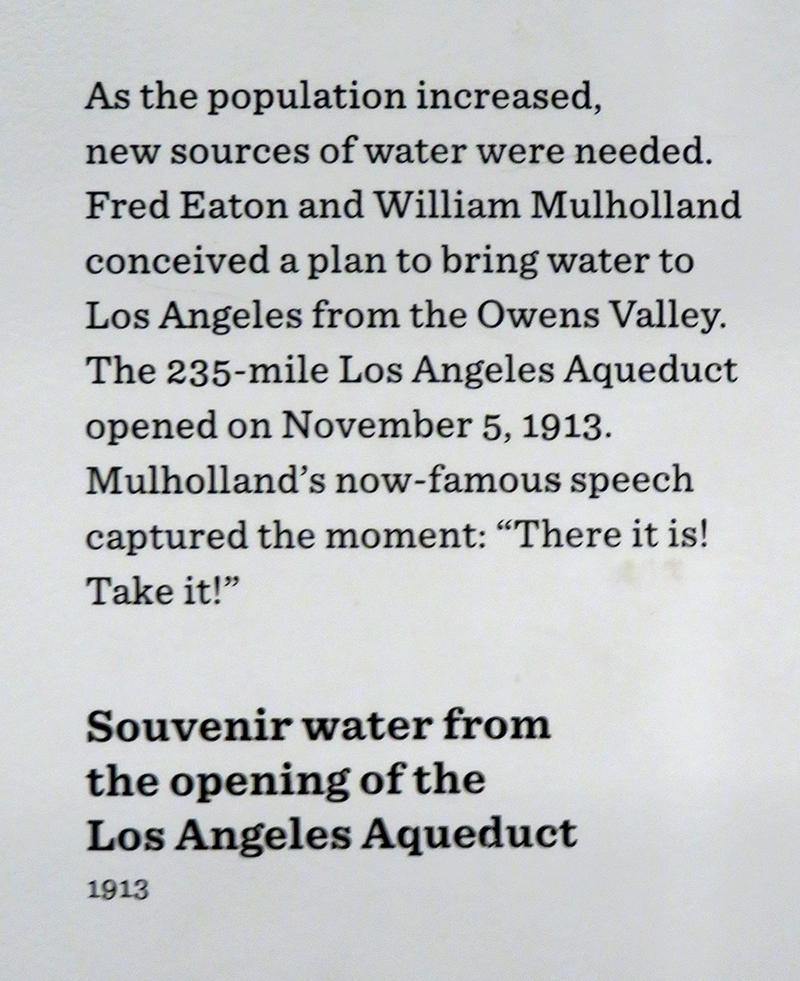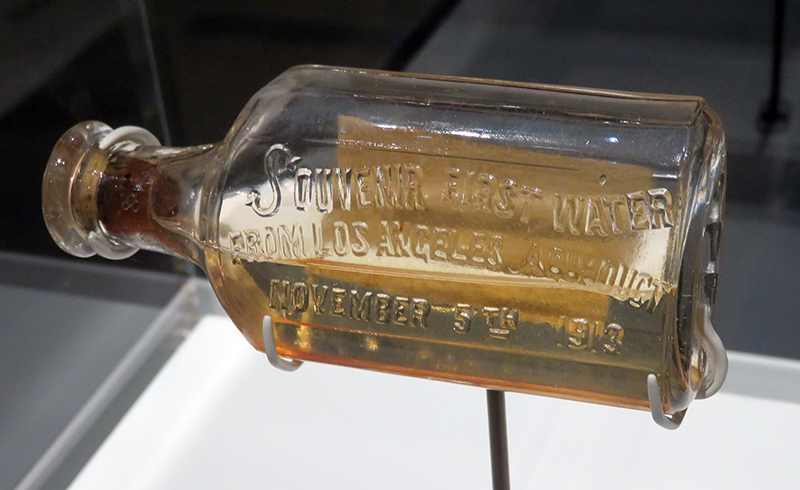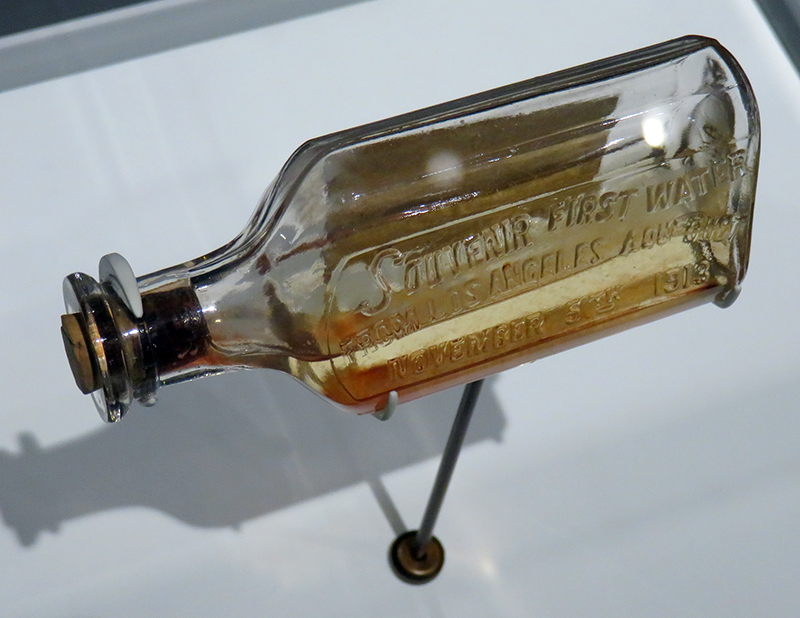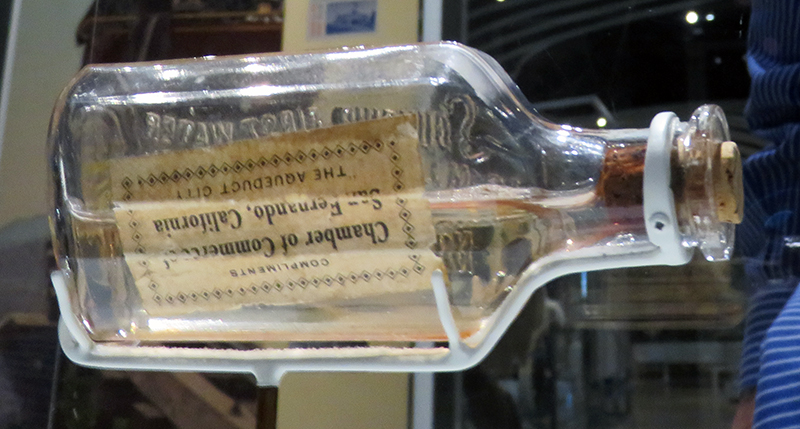|
|

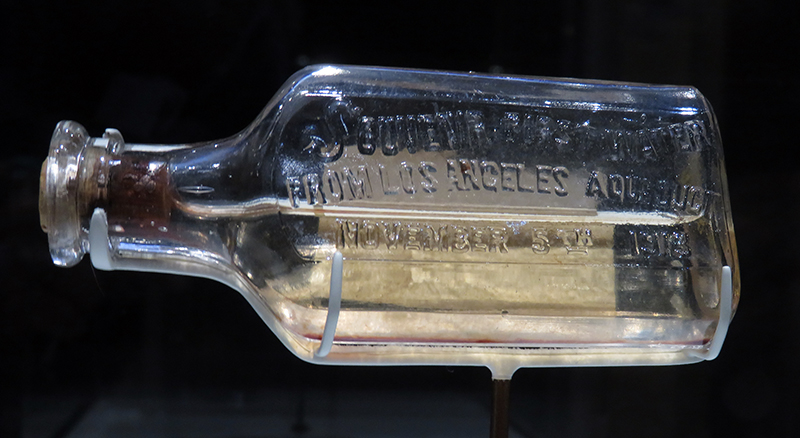
Click image to enlarge
Souvenir Water from the opening of the Los Angeles Aqueduct at the Cascades in Sylmar/San Fernando, Nov. 5, 1913. On display in the Natural History Museum of Los Angeles County's permanent "Becoming Los Angeles" exhibit, which opened July 14, 2013. Bottle reads: Souvenir First Water from Los Angeles Aqueduct / November 5th 1913 (Paper glued to back of bottle): Compliments / Chamber of Commerce of San Fernando, California / "The Aqueduct City" Museum signage reads: As the population increased, new sources of water were needed. Fred Eaton and William Mulholland conceived a plan to bring water to Los Angeles from the Owens Valley. The 235-mile Los Angeles Aqueduct opened on November 5, 1913. Mulholland's now-famous speech captured the moment: "There it is! Take it!"
About NHMLA's "Becoming Los Angeles" Exhibit: The 14,000-square-foot permanent exhibition is the largest in the Museum. It tells stories in six major sections: Los Angeles and the region at the time of Spanish contact; the Spanish Mission Era; the Mexican Rancho Era; the early American Period; the emergence of a new American city in the late 19th and early 20th centuries; the Great Depression and World War II, to the present. Some of the stories are well known, such as how the acquisition of water through the Los Angeles Aqueduct in 1913 allowed Los Angeles to grow. But there are other natural and human influences might surprise you: how cattle, the Gold Rush, floods, a plague of grasshoppers, railroads, and outlandish booster campaigns all played a part in transforming the region into an agricultural and industrial empire; the pivotal role Los Angeles played in World War II; and the dynamic diversity of the earliest settlers. Come meet L.A.'s Native Americans, colonists and settlers; rancheros, citrus growers and oil barons; captains of industry, boosters and radicals; filmmakers, innovators and more.
LW2983: 9600 dpi jpegs from digital images by Leon Worden, 4-29-2017.
|
* More Photos * 100th Anniversary 
Archive Footage 
|
The site owner makes no assertions as to ownership of any original copyrights to digitized images. However, these images are intended for Personal or Research use only. Any other kind of use, including but not limited to commercial or scholarly publication in any medium or format, public exhibition, or use online or in a web site, may be subject to additional restrictions including but not limited to the copyrights held by parties other than the site owner. USERS ARE SOLELY RESPONSIBLE for determining the existence of such rights and for obtaining any permissions and/or paying associated fees necessary for the proposed use.
